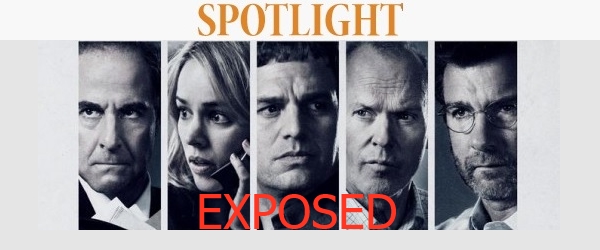
Shining the light on 'Spotlight'
In addition to the instances we have already reported, here are some other ways that the Hollywood movie Spotlight has misled the public about the sex abuse scandal in Boston:
1. A key scene in the film features the Globe's Walter Robinson threatening Boston Church-suing lawyer Roderick MacLeish to cooperate with the paper's investigation. MacLeish wrote in a Facebook post that in truth the event "never occurred" and, in fact, he "welcomed" the meeting with Robinson.
2. Another scene features the Globe's Sacha Pfeiffer claiming that abuse victims "have to sign confidentiality agreements to get monetary settlements," implying that the Church forced these agreements upon victims. In truth, as we have reported before, it was the other way around. Embarrassed by what had happened to them, it was the victims who sought secrecy from the Church.
3. In another scene, Robinson asks MacLeish if he ever followed up with the cases he settled to ensure that abusive priests were taken out of ministry. MacLeish's uncomfortable silence to Robinson's question implies that he didn't. In fact, it was MacLeish himself who told the Globe back in December 1993 that the Archdiocese had removed 20 accused priests from active ministry. (In addition, MacLeish at the time "credited the Catholic Archdiocese of Boston with taking prompt action on the accusations.")
4. The film portrays Globe staffer Steve Kurkjian as being dismissive of the Globe's pursuit of the Church abuse story. In fact, Kurkjian did some of the reporting on the Spotlight Team investigation. So reckless is this portrayal that even the Globe's own Kevin Cullen has now written, "Kurkjian, a journalistic icon, is owed an apology."
5. The film portrays a meeting in 2001 about abuse at Boston College High School between Globe staffers and administrators as being confrontational in nature. In truth, not only did the meeting not take place until 2002, it was indeed cordial. Even the Globe itself at the time praised the high school's swift and transparent handling of its crisis in an opinion article.
6. The film features a scene with the Globe's Spotlight Team acting astonished when learning about a report issued to bishops in 1985 that had foreseen the scope of the abuse crisis. In truth, the paper already wrote about the report back in 1991, and the report itself was the subject of a front-page article in the Globe in July 1992.
[ADDENDUM, 12/5/15:]
7. Hollywood entertainment magazine Entertainment Weekly exposes at least three more fictitious scenes! Check it out:
"Late in the film, [Globe columnist Walter] Robinson pressures one of his sources, a lawyer named Eric MacLeish (Billy Crudup), for information, and the slick attorney throws it back in his face: 'I already sent you a list of names … years ago!' he says to Robinson and [the Globe's Sacha] Pfeiffer. 'I had 20 priests in Boston alone, but I couldn't go after them without the press, so I sent you guys a list of names … and you buried it!'
"Except that exchange never actually happened. Nor did the scene where Pfeiffer searches the archives and brings the clipping of the December 1993 story to Robinson, proving MacLeish correct: it ran on B42 and didn't include any of the priests' names. And a later scene, where Robinson admits to his colleagues that he had been the Metro editor back in '93, accepting his role in not catching the story sooner, didn't happen either."
Now you know.
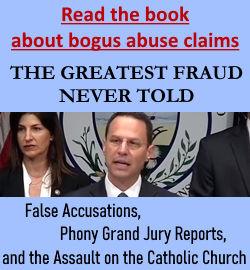

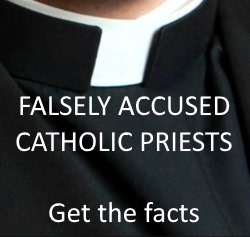
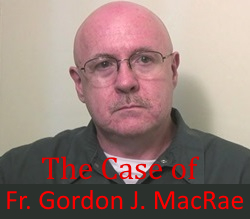
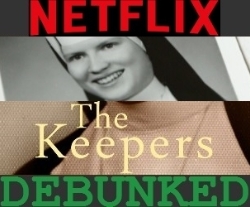
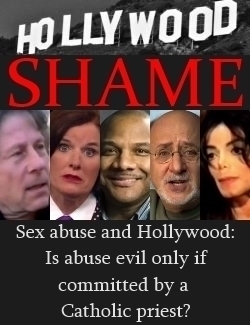
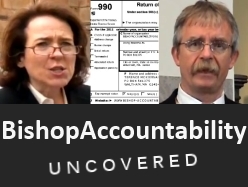
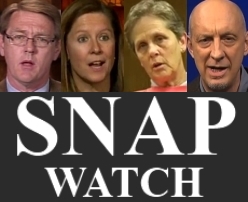
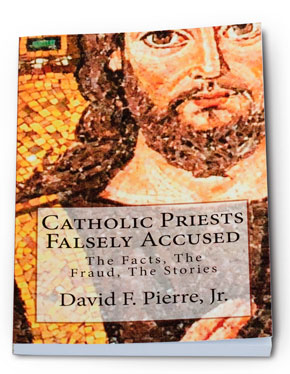
You reported wrong if you think the church didn't want the silence agreement.
Why was JohnXXIII approving a canon law in 1962 that excomunicated anyone who brought scandal to the church? That law was only used against victims and our families.
I have heard experience after experience like that happening to faithfull catholic victims; our families; and including our witnesses. All were offered excomunication (hell's fire) if we spoke. It was never used against those who caused the scandal then or now: the bishops enableres and priest pedophiles..
I know for certain one of the L.A.victims was offered in the early 1990's $3million by the church if she never spoke to anyone ever about the fact she was molested and gave birth to a child by one of her molestor priests. That's the absolute truth.
So don't give me this shit that it was the victims who demanded silence not the church. The church's reputation had to be protected or they'd lose money. So if victims wanted compensation that was a prerequisite: Absolute silence.
And that Absolute silence allowed the child abuse to continue; because the church, contrary to everything they said, were transferring these monsters to new catholic children with no warning at all..And they did it exactly the same way internationally.
This website often attempts to be as deceitful as it claims the filmmakers and reporters were. For example, stating that the rate of abuse in the priesthood is lower than in the general population is a red herring. The issue is not whether priests abuse at a different rate than the general public. The issue is that in the general public a person abuses some people, someone speaks out, the abuser goes to jail, and he becomes labelled a sex offender for the rest of his life for all the world to know about. In the Church, for decades, if not centuries, a priest abuses some kids, someone eventually speaks up, the church uses religion and "the grace of God" to silence the parents, they move the priest to another parish without even warning the new pastor on the side, they let the priest be put in charge of the altar boys and the youth programs, and the cycle continues over and over. Yes, some psychologists thought that they could be cured, and the Church cherry-picked providers who would tell them what they wanted to hear, but they didn’t even take reasonable common sense steps to prevent abuse. You may think an alcoholic can stop drinking, but what kind of person would have an alcoholic take a job as a bartender? That’s what they did.
This entire website is ill advised. It's legitimate to want a story to be told truthfully, especially one that is so big and so subject to mob mentality. However, the most intelligent way to accomplish that is to acknowledge the bulk of the story that is true while also delineating what you believe to be inaccurate. An occasional statement of "Even one instance of abuse is too many," is disingenuous and inadequate. Whether you want to believe it or not, many Catholic bishops and clergy made egregious errors in judgment that border on unforgivable. When choosing between protecting the Church or protecting innocent children, they chose the Church. I know that is painful to people who love the Church. I’ve been there myself. However, you must accept the truth. You’re welcome to meet with me so I can show you my un-redacted files that show the cover up and the indecency. I can show you examples of the church, in my case, not even following its own policy…twice.
My case didn't involve a confidentiality agreement, but I know other victims, including one abused by the same priest who abused me, who were forced to sign the agreements as part of their settlements. It may be true that some victims did request them. I can envision that being true for some people, but to suggest that this was the case for all or even most of the cases is really reaching at best and cruelly dishonest at worst.
Much of what we see on this page and this site is reaching in such a way that it is obvious that the intent of this site is to prove a predetermined point, not to take a truly honest and fair look at the situation. It also blatantly attempts to minimize a lot of things that really happened. Many people were still being abused in the 90's, including me. Yes it was more prolific earlier, but the approach of, "This is an old issue, there's nothing to see here," is a dangerous one that makes us destined to repeat everything.
A couple of examples of how the arguments sound desperate-
In item #6. It is perfectly plausible that the reporters were astonished to uncover that report. I don't know either way, but just because the newspaper itself had published reports about something many years earlier doesn't mean that this collection of individual reporters knew of it. Whether they learned of it in real life by talking to that one source or by discovering the Globe's own reporting is irrelevant.
It doesn't matter that the meeting in item #5 took place in 2002 and not 2001. Movies have to take minor liberties in order to tell a cohesive story. The exact time of that meeting has no consequence on its significance. This is akin to saying, "Gotcha! In the movie Michael Keaton was wearing brown shoes, but at the real meeting he was wearing black loafers! We knew you were dishonest and full of deceit, evil movie makers!"
Every once in a while we get a still-uncorrected bit from one of JR’s collection of 3x5s and on the 30th at 840PM we get just such a one, this time about the 1962 Instruction from the Holy Office (as it was then known) entitled “Crimen Sollicitationis”. This topic had come up previously on this site and had been demonstrated to be hell-and-gone from JR’s cartoonish description, but – who can be surprised? – he apparently never changed his errant 3×5 and thus the plop is tossed here once again.
There is actually an informative and extensively noted Wiki entry on the subject
https://en.wikipedia.org/wiki/Crimen_sollicitationis
And readers can access an English translation of the Instruction’s text itself here
http://www.vatican.va/resources/resources_crimen-sollicitationis-1962_en.html
Continuing in regard to JR’s of the 3rd at 840PM:
I would summarize the Instruction thus:
Seventy of the Instruction’s 74 paragraphs deal with handling a case of a priest being accused of soliciting sex in the course of hearing a confession. The final four paragraphs deal with the “crimen pessimum” of soliciting or committing or attempting to commit an “obscene act” with a pre-adolescent child or an animal, whether in the Confessional forum or not. The penalties can extend all the way to laicization.
In regard to the canonical trial which might follow an accusation, the “secrecy” (actually termed “absolute confidentiality”) is imposed on all tribunal members (thus the officials appointed to preside at the canonical trial) as to the proceedings of the trial. Explicitly excluded from this requirement is any later “lawfully published” official report of the trial once it is concluded, and that would include the evidence upon which the tribunal’s decision was based.
Thus the tribunal members and the accused priest were enjoined by an oath of secrecy not to discuss the trial before its conclusion. The accuser(s) was/were to be similarly enjoined by a warning and an oath, although – again – this “absolute confidentiality” was to remain in effect only during the term of the trial process itself.
The Wiki article quotes noted religious commentator John L. Allen, Jr. as asserting that this requirement of “absolute confidentiality” (which connotes differently from the term “secrecy”, I would add) was designed for the protection of all parties involved and to better ensure “the free finding of facts”.
Continuing in regard to JR’s of the 3rd at 840PM:
Thus there was no blanket and permanent “secrecy” required by the Church.
As to the rest of JR’s bits here:
Clearly, he simply tried to use his (inaccurate) 3×5 as if it were applicable to the ‘secrecy’ stipulations so often attached to Catholic Abuse settlements (often, as Federal judge Schiltz said, at the behest of the tort attorneys).
He then tries to buttress this bit with his (as so often) convenient stories about ‘hearing’ “experience after experience” that – who can be surprised? – purport to exemplify and demonstrate his already-inaccurate cartoon version. But even if a canonical trial were at issue, then the accuser(s) would only have been instructed to retain silence until the canonical trial process was concluded. And the Instruction mentions nothing about a person being prohibited from retaining legal counsel for a civil (rather than ecclesiastical) trial. So his bit here is incoherent in that it doesn’t even conform to the regulations (i.e. in the Instruction) upon which he himself bases his presentation here.
The 1962 Instruction thus remains in its integrity and JR is well advised to follow his own advice and not “give” readers “this sxxt”.
In my two 'continuation' comments on the JR comment of the 30th at 840PM I mistakenly time-dated them as the '3rd' at 840PM. They are, of course, continuations of comment on his of the 30th at 840PM.
On the 3rd at 946AM ‘1993 Victim’ proffers several points that require comment.
The assertion in the first paragraph that “in the general public” abuse is reported, the abuser “goes to jail” and is required to register as a sex offender is – if claims of vastly under-reported and innumerable still-unreported cases throughout society are to be credited – not at all what happens as a “general” rule. And that was certainly not the case in the way-back, decades ago, when the public and professional sensitivity to any and all forms of ‘abuse’ was far less than it has become in the past few decades.
However the Church now has some of the most – if not the most – comprehensive protection and prevention protocols of any organization on the planet.
And we see – as so very often – the conflation of ‘claim’ with ‘report’ and ‘accused abuser’ with “abuser”.
And going back “for centuries” is an assertion that remains undemonstrated, although it is most very convenient to the scare-visions that have been used to stampede the public into imagining that hordes of clerics were gleeful predators bent on rapine, supported by scores of hierarchs who enabled the great game to keep on going while – conveniently neutralizing the glaring and inconvenient fact of their silence – parents did not report alleged instances and police did not pursue such claims as were made merely because the Church (somehow) managed to keep them all quiet.
And while I hold no brief for the position that the Church (or, more accurately, local individual hierarchs) has always and in every instance handled a case as might be desirable – especially if we anachronistically apply the standards of the present day to matters decades (or “centuries”) ago – yet we have seen on this site that when documentation actually is examined, hierarchs did take action.
Continuing with the ‘1993 Victim’ comment of the 3rd at 946Am:
And the question regarding “common sense” precisely raises the question as to what was “common” in the general public and professional “sense” of the issue decades ago.
The second paragraph then declaims and pronounces that “this entire website is ill-advised”. And according to whose agenda would it be “ill-advised”? And has this commenter read enough of the site’s articles and commentary to justifiably issue so sweeping a dismissal?
I can completely agree that a topic such as this can become “subject to mob mentality” and – to use my term – a Stampede. But this would then require accurate reporting, comprehensive in the sense that it considered all the relevant factors and not ‘selective’ in the sense that it went for the visceral stories and claims, presumptively assuming their veracity and then going on from there, larding ‘reports’ with what we now see as all the classic tropes of the scare-vision.
And ‘Spotlight’ is – by its own PR – a commercial film designed to highlight the heroism and integrity of the journalists and thus its script – neatly protected by that classic Hollywood proviso that it is (merely) ‘based on a true story’ – was specifically and carefully designed and crafted to achieve its dramatic purposes. So was, for example, the 1940 film “They Died With Their Boots On”, a movie ‘about’ Custer and his last battle at the Little Big Horn; a film that took so many ‘dramatic’ liberties that one could hardly come away from it knowing much about the actual event.
Continuing with the ‘1993 Victim’ comment of the 3rd at 946Am:
I personally have little doubt that some of the errors and/or failures made by individual hierarchs were indeed “egregious”. But that is – I also have little doubt – also true about every other institutional element in the society and in the “common sense” of that era.
Nor was any accurate evolving of a more objective comprehension of the consequences of individual episodes of the lesser forms of what is now called ‘sexual abuse’ well-served when in 1998 the Rind meta-study of sixty or so previously published (and largely un-noticed) studies of that topic was suddenly assaulted by Congress itself, which for the first time ever in the history of the Republic passed a unanimous Sense of Congress in 1999, effectively declaring that the pursuit of such a path of scientific analysis was unacceptable (and any researchers involved in pursuing such a path would be cut off from government funding).
Which gives rise to the question as to whether the “common sense” of the present era is as actually accurately informed as it would present itself to be.
Continuing with the ‘1993 Victim’ comment of the 3rd at 946Am:
I commend ‘1993 Victim’ for characterizing his own claimed experiences as instances of “indecency” (rather than the far more catchy and viscerally gripping ‘rape’). Whether those instances also demonstrated “cover up” is another question altogether, given the many complications of assessing the relevant hierarch’s actions, especially in the internet forum (although I do not rule out the possibility of “cover up” in this instance).
Was his “case” a criminal case (it would appear not, since there is mention of a “settlement”)? And if he does “know” of instances where there was a confidentiality agreement, then the question arises: at whose behest was a “confidentiality agreement” included as part of the settlement?
And – as I have noted before on this site: if indeed the defendant Diocese requested such an agreement, which would have had to have been approved by the cognizant court, it is hardly improbable that such a request was made to prevent further encouragement for persons who might imagine (hardly irrationally) that they could – under the conditions of Stampede – lodge an allegation for the prospect of substantial financial gain with neither i) little risk of serious examination and assessment not little risk of ii) being prosecuted if such an allegation were ever to be demonstrated to be false.
Continuing with the ‘1993 Victim’ comment of the 3rd at 946Am:
And to suggest that possibility – uncongenial as it may well be to a Stampede run on the Church – is hardly “reaching at best” for “all or even most cases”: the possibility or probability of lodging false accusations for pecuniary gain is hardly unknown in tort law, especially in light of those reasons (i) and (ii) I have just given in the preceding paragraph here and also in light of (iii) the protective status and aura of ‘victimhood’ so greatly amplified by selective media reporting and(iv) politically-manipulated ‘science’ at the highest levels.
Nor is it demonstrably “cruelly dishonest” to note those uncongenial elements and the possibilities or probabilities to which they give rise.
Nor is it therefore the case that “much of what we see on this page and this site” is merely “reaching”.
Continuing with the ‘1993 Victim’ comment of the 3rd at 946Am:
And if there is a “predetermined point” in play here, surely it is the battery of presumptions made in the service of that Stampede: that all claims and allegations are ‘reports’ and veraciously factual; that all or many priests and hierarchs are implicated in either perpetration and/or cover-up; that all consequences of even the least forms of such ‘abuse’ are profound and perhaps irreparable; that all life-problems of any allegant – even an adult – are demonstrably and directly attributable to any such instance of even the least (claimed) instance of ‘abuse’; that the Church was in this respect unique among all the institutions of society in any by-gone era; that the Church remains unique among present-day institutions as an “egregious” offender that has taken no effective steps to prevent even the least forms of ‘abuse’; and that the ‘science’ underlying contemporary “common sense” about ‘abuse’ is demonstrably and undeniably much advanced over the “common sense” of any prior era.
Indeed, on that basis I have to directly disagree and contradict ‘1993 Victim’s assertion here as to taking “a truly honest and fair look at the situation”. That is precisely what this site – as I understand it – has been trying to do all along. And ‘1993 Victim’ is welcome to continue his examination of “this site” (thus its archived articles and comments) to see both a) how this site has dealt with the Catholic Abuse Matter and b) how assorted persons otherwise-inclined have seen fit to distract and obstruct that assessment.
Continuing with the ‘1993 Victim’ comment of the 3rd at 946Am:
And the 1990s are now at least two (very eventful) decades in the past. Nor do we actually ‘know’ whether “many people” or just how many people were actually “still being abused” in the 1990s or for that matter in any decade prior.
Nor is it “minimizing” to point out the many egregious elements that intensify into a probability the possibility that claims and allegations were of dubious and surely undemonstrated veracity.
And given the world-class protocols since instituted by the Church, then it is hardly accurate to characterize the position of this site as merely being that “this is an old issue, there’s nothing to see here”. The key point of vital relevance here is that the Church has indeed instituted protocols that should be the envy of any other institution, large or small.
This actuality is uncongenial to those who would like to Keep The Ball Rolling in regard to the Catholic Abuse Matter. And it will be interesting to see if the ‘Spotlight’ movie is actually followed by an uptick in fresh allegations and lawsuits – from the present or from the way-back.
Continuing with the ‘1993 Victim’ comment of the 3rd at 946Am:
It is relevant here to consider as well the possibility of what in government programs is known as ‘rent-seeking’: once a program is funded to deal with an identified or declared ‘issue’, then those who benefit from that funding immediately become a vested interest the objective of which is to keep that money coming. “Mutatis mutandis”, there are now a congeries of such vested interests that have benefited from the Catholic Abuse Matter and they will surely rather see monies continue to flow to them if only they can Keep their Ball Rolling.
And in regard to the ‘Globe’s ‘reporting’, it is precisely the quality of that ‘reporting’ that is at issue here. Since 2002 and up into the present this site has published a number of instances of similarly skewed and sensationalist ‘reporting’ by journalists and media outlets. Indeed, one reporter – if memory serves – whose material was particularly egregious in this regard prompted a major J-School to send out a dog-whistle to the profession that such ‘reporting’ would still be congenially received by the profession’s upper-echelon gatekeepers. That instance was covered on this site.
Continuing with the ‘1993 Victim’ comment of the 3rd at 946Am:
We might go around the garden on what constitutes a “minor” change for dramatic purposes and what constitutes a substantive change. But persons so inclined might want to consider such assessments from the following hypothetical: that at some time in the future a media outlet decides it would be ‘newsworthy’ and a ‘public service’ to investigate how many ‘victims’ actually did file false legal claims in the Catholic Abuse Matter and as a result reaped significant fiscal rewards.
And surely, far more calculating organizations, public and private, have taken steps to ensure that the type of ‘reporting’ we have seen in the Catholic Abuse Matter is not directed at them. And from the point of view of cold and self-interested calculation, who can blame them?
Anybody else sick of what Publion says?
On the 5th at 10.16 am, Jim Robertson asks the question…"anybody else sick of what Publion says?"
Can only speak for myself and respond ….Not at all, because he is worth reading.
However I do appreciate that if somebody went to great trouble to create a smokescreen….. then they would not welcome anybody who was helping others to see through that smoke.
Publion's comments and "stampede" nonsense and TMR's bull that are the smokescreen here.
I'm hiding nothing. You compensate less than 20 % of your 11,000 victims and I'm a smokescreen? What am I covering up? Your imaginings? How am I responsibile for "facts" that you've invented.
Everything P writes is a smokescreen. Hence all his verbage. All his words to hide the fact that you and he are defending a shit corporation who let children be raped. How do you sleep at night?
The movie claims to be based on actual events, not an exact portrayal. The addendum on this page is irrelevant. In fact I believe there's a statement at the very end of the movie that the filmmakers took liberties with timelines and details of events in order to make a cohesive film, so they agree with you that it's not 100% accurate. This page is like some sort of irrelevant GOTCHA about a claim that was never made. There's a complaint on one of these pages about derrogatory comments made by reporters in the film about the Church. That may have been a dramatization by the filmmakers as wel, but in that instance this website assumes it's accurate because this website will twist anything to serve its purpose.
So the summary of this page and this website is: Since Spotlight is not a verbatim account of the journalistic process that took place, the Church is not actually guilty and we should all wag our fingers at the filmmakers and the Globe. I suppose the hundreds (thousands?) of victims in Boston were all lying about what happened, and all of those internal church documents that were released by the Church were fabrications that they create dto make themselves look bad. Ridiculous.
This website seems to be missing some sort of summary page that tells us what the actual conclusion is that we are supposed to draw. The film isn't 100% accurate, some people object to their portrayals, an occasional quote is exaggerated out of context, etc. OK, so what's the conclusion then? What's the message we are supposed to be agreeing with here?